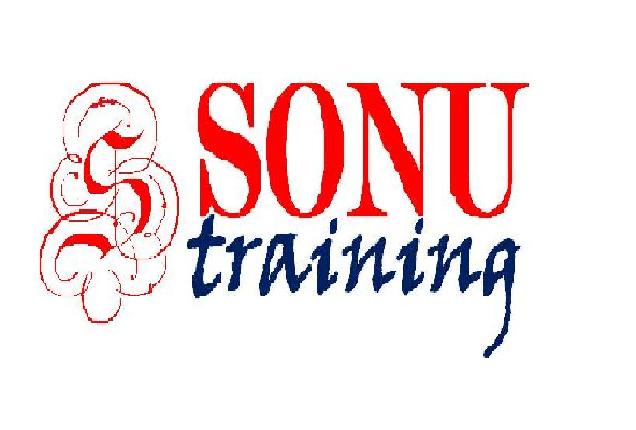Module 1: Introduction to SharePoint Design
Although SharePoint is a powerful and extensible platform for almost any solution related to electronic information, it uses web technologies to provide access and control to the data it manages. However, because the web pages and controls are very specific to SharePoint, designing and customizing a SharePoint site can be difficult since it requires special tools and processes for applying these changes effectively and consistently. This module examines areas where SharePoint can be customized and tools related to that customization, specifically SharePoint Designer.
· Elements of SharePoint Design
· Designer Tools
· Design Areas
After completing this module, students will be able to:
· Define and describe design points in a SharePoint site
· Describe tools available for designing SharePoint sites
· Identify and describe areas for designing SharePoint sites
Module 2: Understanding SharePoint Designer
SharePoint Designer is a specific client-based web design tool created specifically to communicate with and design objects and artifacts within SharePoint. However, this tool is a complex tool with a variety of interfaces and controls that require some familiarity to comfortably implement and manage the design controls built into this tool. This module examines the basic interface of SharePoint Designer, including how it communicates with SharePoint and common tools, structures and elements involved in designing through SharePoint Designer.
· SharePoint Designer Experience
· Working with SharePoint Designer
Activity: Examining the SharePoint Designer Experience
Exercise 1: Opening SharePoint Designer
Exercise 2: Understanding the SharePoint Designer Interface
Exercise 3: Managing Metadata for Lists and Libraries
After completing this module, students will be able to:
· Describe the purpose of SharePoint Designer in relation to designing SharePoint sites
· Define key areas where SharePoint Designer is used to customize SharePoint
· Describe the navigation and tools available in the SharePoint Designer interface
Module 3: Building Common Information Structures
One of the most basic features of SharePoint Designer is to create information and content structures within SharePoint to design and deploy an array of customized solutions through sites, lists and libraries, and various other objects important to controlling access to SharePoint content. This module examines the common content structures that SharePoint Designer can manage directly as well as practices involved with using SharePoint Designer instead of the browser.
· Understanding SharePoint Site Elements
· Creating Sub sites
· Customizing Lists and Libraries
Activity: Creating Information Structures
Exercise 1: Creating a Sub site
§Exercise 2: Creating Lists
After completing this module, students will be able to:
· Describe how SharePoint Designer constructs SharePoint objects and artifacts to manage content
· Describe the key interface elements involved with customizing and configuring SharePoint objects
Module 4: Creating Content Types
An important element of content management inside SharePoint is the use of content types and metadata. SharePoint Designer is equipped to create and managing these structures in a SharePoint site and thus can be used to manufacture solutions that require custom metadata and content types to also exist alongside custom lists and libraries. This module examines how lists and libraries, as well as sites, can be customized related to content structures such as columns and content types.
· Understanding Content Structures
· Customizing Content Types
Activity: Creating Custom Content Types
Exercise 1: Creating Site Columns
Exercise 2: Creating Site Content
After completing this module, students will be able to:
· Identify and describe how SharePoint Designer can configure standard content structures in SharePoint sites
· Define and describe the process for customizing lists and content in SharePoint Designer
Module 5: Adding Site Assets
SharePoint provides several repositories for adding and managing site assets for SharePoint sites, although the practice of using such assets is usually self-managed rather that provided out of the box for designers. SharePoint Designer can interact with such assets as images, audio and video, as well as web pages and other web content, to enhance, brand, and customize sites inside SharePoint. This module examines how to work with site assets and manage them through SharePoint Designer.
· Site Assets
· Customizing Web Content
Activity: Managing Site Assets
Exercise 1: Adding Assets to a Site
Exercise 2: Creating Web Pages
After completing this module, students will be able to:
· Identify the assets created and managed through SharePoint Designer
· Describe the elements of a web page and how SharePoint Designer can customize them
· Describe and identify the difference between publishing and non-publishing web pages
Module 6: Managing Look and Feel
Although SharePoint is a very unique web application, it does conform to many web design principles and technologies, especially in relation to .NET framework technologies. The look and feel of a web site is important to many organizations as this creates a unique branding on the web page content, providing significant, recognizable identifying marks that indicate the content belongs to that organization. This module examines the standard features involved in managing look and feel for SharePoint and how SharePoint Designer can create, customize and control them.
· Understanding Web Site Formatting
· Customizing Web Site Formatting
Activity: Managing Look and Feel
Exercise 1: Formatting a Web Page
Exercise 2: Creating Style Sheets
Exercise 3: Creating a Master Page
After completing this module, students will be able to:
· Describe the different web tools involved in customizing the look and feel of a SharePoint site
· Describe the key elements of a SharePoint-compatible Master Page
· Describe how consistent formatting can be applied simply to a web page
Module 7: Managing Workflows
Converting business processes into electronic automation has been a staple feature of SharePoint since its early days, and has become much more versatile and portable since. SharePoint workflows use the Windows Workflow Foundation to power the processes, and sites and lists can store and use them for any purpose. In SharePoint Designer, these out of the box workflows can be configured for even more powerful, declarative and conditional usage than the browser will allow. This module will examine the declarative workflow through SharePoint Designer and how they are more portable and reusable than before.
· Extending SharePoint Workflows
· Creating Declarative Workflows
Activity: Extending Process Automation with Workflows
Exercise 1: Creating Custom Workflows
Exercise 2: Reusing Workflows
After completing this module, students will be able to:
· Describe and identify how SharePoint provides business process automation
· Describe how SharePoint Designer enhances out of box functionality in relation to workflows
Module 8: Data Sources and Data Views
SharePoint has always been about presenting an interface to data anywhere in an organization through the SharePoint site. Configuring and using data sources is an important aspect of bringing data outside of SharePoint into SharePoint, and SharePoint Designer is fully equipped to communicate with virtually any data source as well as expose this data through web parts. This module will examine how SharePoint Designer is used to capture data through data sources and expose them for use through data view web parts.
· Data Sources in SharePoint
· Viewing and Connecting to Data
Activity: Accessing Data Through SharePoint
Exercise 1: Creating Data Sources
Exercise 2: Creating Data Views
After completing this module, students will be able to:
· Describe how SharePoint provides access to external content that is not part of SharePoint data
· Describe and identify the key elements involved in bringing external data into a SharePoint site
Module 9: External Content Types
SharePoint provides an additional, extensible way to not only access external data but also to manipulate it directly through lists constructed through SharePoint sites in the form of lists. SharePoint Designer provides a simple yet effective method for bridging external content and SharePoint sites for use inside a site interface. This module will examine how to connect SharePoint sites to external content and use External Content Types with External Lists.
· Using External Content
· Connecting to External Content
Activity: Connecting to External Content
Exercise 1: Creating External Content Types
Exercise 2: Using External Content
After completing this module, students will be able to:
· Describe how SharePoint Designer provides full access to external data
· Describe the objects created in SharePoint Designer to represent external data
· Describe how external data can be used in SharePoint sites |

